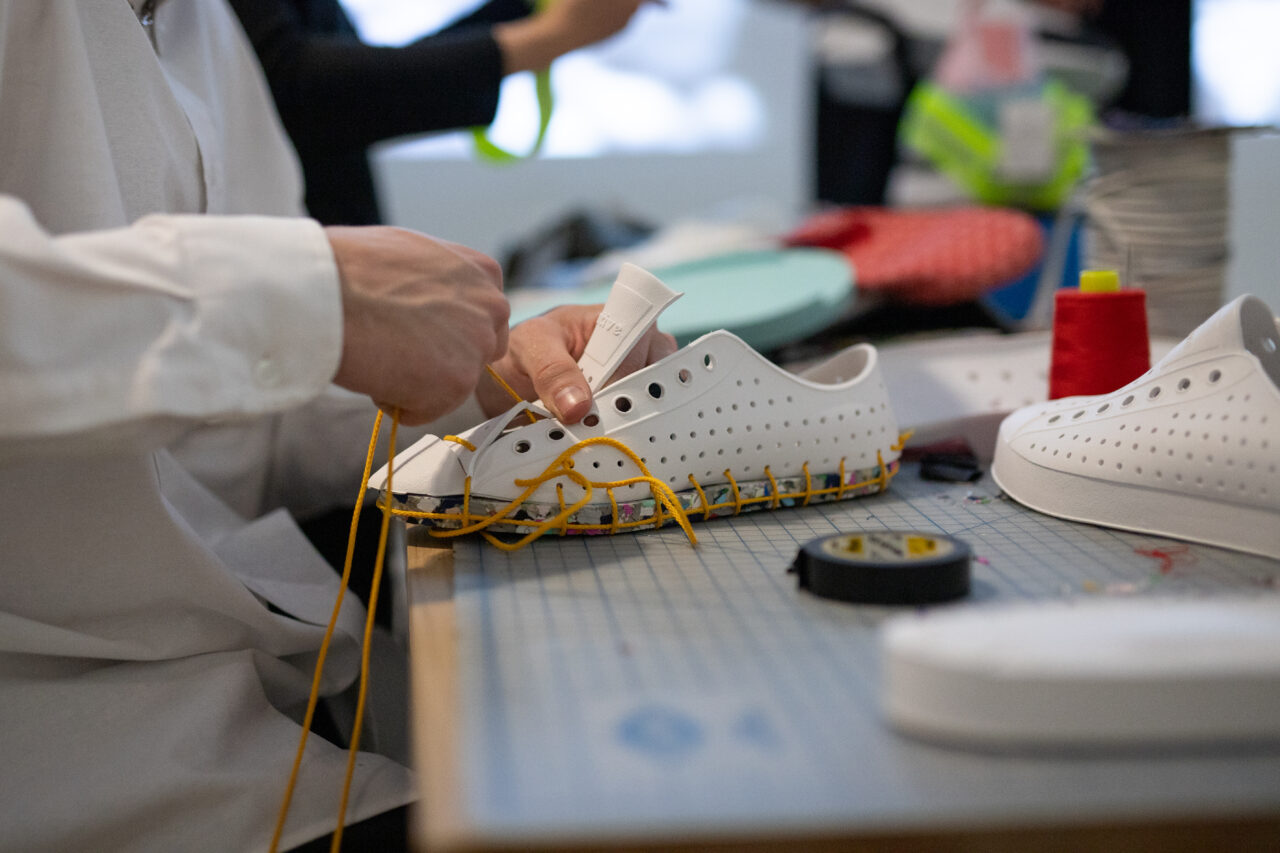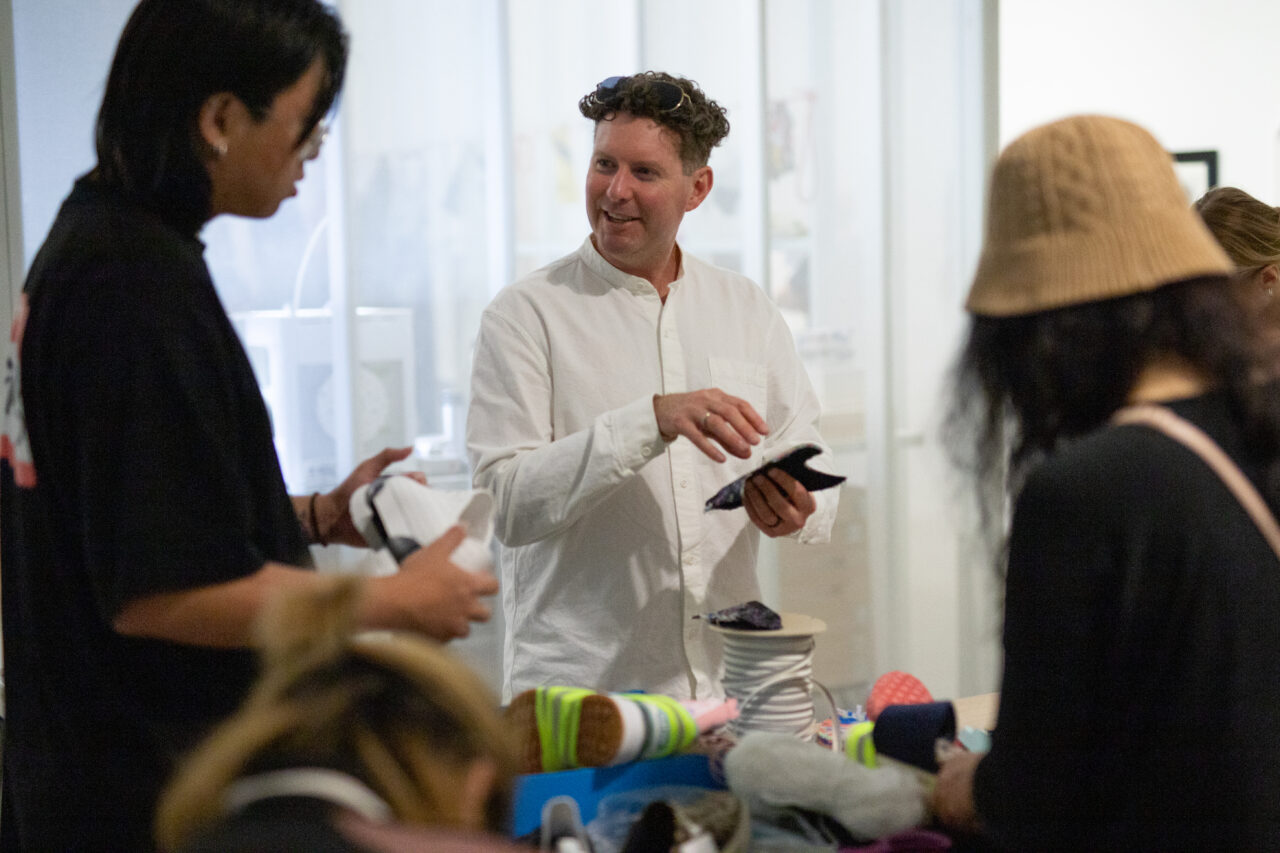Led by ECU faculty members Hélène Day Fraser and Keith Doyle, the workshop was one of several taking place in the Lab: Here//Too//For workspace inside the Vanco
Source: Material Matters and Native Shoes Collaborate to Imagine New Life for Well-Loved Footwear
A few years ago, in Memphis, an exhibit arrived which utilized an interesting material, sneakers. It wasn’t a display of collabs or hyped pairs. There weren’t pictures on the walls of the exhibit. The artwork featured upcycled pairs turned into masks and works of art. It was an intriguing concept and could have been a lot higher profile, but the Brooks Museum didn’t quite understand how they could drive traffic and engagement:
While browsing LinkedIn we ran across a post from Douglas Sheridan (Native Shoes). He was discussing the method of make for Native and how the brand has chosen to utilize better materials. He explained that an unintentional aspect of being more conscious is that the footwear, even after it has been worn down, can be remade into other items. The fact that the materials aren’t toxic allowed for students at Emily Carr University of Art and Design to do something very similar to the project which was featured in Memphis’ Brooks Museum.
Students, staff and faculty recently collaborated with Native Shoes cofounder Thomas Claypool to transform end-of-use and recycled shoes into new materials, products and apparel.
Titled Native Shoe Hack, the event is the latest evolution of an ongoing collaboration between Material Matters research hub at ECU and Native Shoes.
Visit Native Shoes’ website to learn more about their products and Remix Project recycling initiative. Find out more about Material Matters at materialmatters.ecuad.ca.
Sneaker Impact is excited to read about this creative partnership and will definitely look to speak with local Miami museums like The Perez to see if there is interest in creating a comparable program. Sneaker Impact has begun a process of grinding unusable footwear. The goal is to make sure sneakers which can’t moved into new economies, don’t end up in landfills. Art offers opportunity and we admire the ingenuity of both brand and educational institution. Kudos to both Native and ECU!




